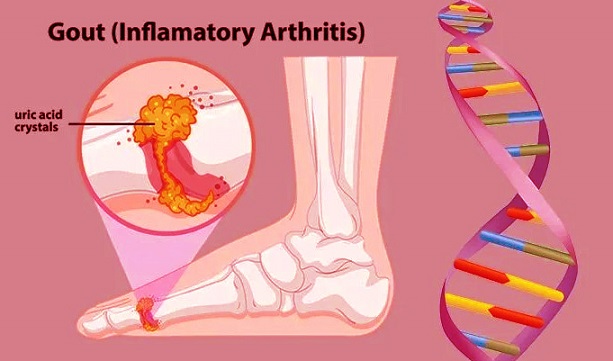Nikhil Prasad Fact checked by:Thailand Medical News Team Nov 08, 2025 1 month, 2 weeks, 2 days, 8 hours, 24 minutes ago
Medical News: Ancient Gene Revived Through Modern Science
In a stunning breakthrough, scientists at Georgia State University have successfully reawakened an ancient human gene lost millions of years ago, offering hope for a permanent cure for gout and other metabolic diseases. By using advanced CRISPR gene-editing technology, researchers managed to restore a natural enzyme that once helped our ancestors eliminate uric acid—the substance responsible for gout’s agonizing pain.
 Scientists Restore Lost Human Gene That Could Erase Gout Forever
Scientists Restore Lost Human Gene That Could Erase Gout Forever
Gout is a centuries-old form of arthritis caused by sharp crystals of uric acid building up in joints, leading to swelling and unbearable discomfort. While most animals can break down this compound naturally, humans cannot, due to the loss of a key enzyme in evolution. In this
Medical News report, researchers revealed that they have found a way to bring that enzyme back, potentially ending a condition that has plagued humanity since ancient times.
The Return of Uricase—A Lost Natural Defense
The missing enzyme, uricase, is found in nearly every other mammal. It helps convert uric acid into a harmless compound that’s easily excreted. Around 20 to 29 million years ago, humans and other apes lost the uricase gene—a change that may have helped early primates store more fat during times of famine. But in the modern age, that ancient survival mechanism has turned against us, contributing to gout, kidney stones, and even heart disease.
Led by Professor Eric Gaucher and postdoctoral researcher Dr. Lais de Lima Balico, the Georgia State University team used CRISPR-Cas9—known as molecular scissors—to insert a reconstructed ancestral uricase gene into human liver cells. The results were extraordinary: uric acid levels dropped sharply, and liver cells stopped turning excess sugar into fat, suggesting a potential new treatment for both gout and fatty liver disease.
Breakthrough in 3D Human Tissue Models
To confirm the effect, the team tested the revived gene in 3D liver spheroids—miniature tissues that mimic how organs function in the human body. The ancient uricase worked perfectly, lowering uric acid levels while operating inside the correct cell compartments known as peroxisomes. “By reactivating uricase, we lowered uric acid and prevented the buildup of fat-producing molecules,” Gaucher explained. “This one approach could combat multiple diseases at once.”
Beyond Gout—A Revolution in Health
The implications go far beyond gout alone. High uric acid, or hyperuricemia, is increasingly linked to hypertension, obesity, and cardiovascular problems. Studies show that nearly half of patients with high blood pressure also have elevated uric acid levels, placing them at greater risk of heart and kidney disease. Current treatments often fail or cause side effects, but gene-based therapy could offer a lasting fix.
The next step
for the Georgia State team involves animal testing and human trials. Delivery options may include lipid nanoparticles—similar to those used in mRNA vaccines—to reintroduce the revived gene safely into patients’ bodies. While challenges remain, including safety and ethical concerns surrounding genome editing, this could mark a turning point in medical history.
The study findings were published in the peer reviewed journal: Scientific Reports.
https://www.nature.com/articles/s41598-025-10551-8
For the latest on treating Gout, keep on logging to Thailand
Medical News.
Read Also:
https://www.thailandmedical.news/news/breaking-gout-and-arthritis-report-warns-that-global-incidences-of-gout-increasing-exponentially
